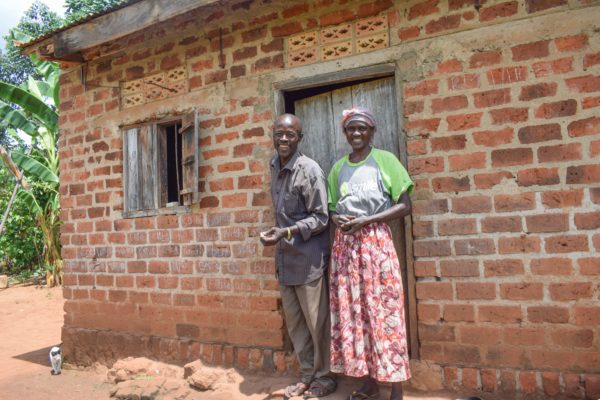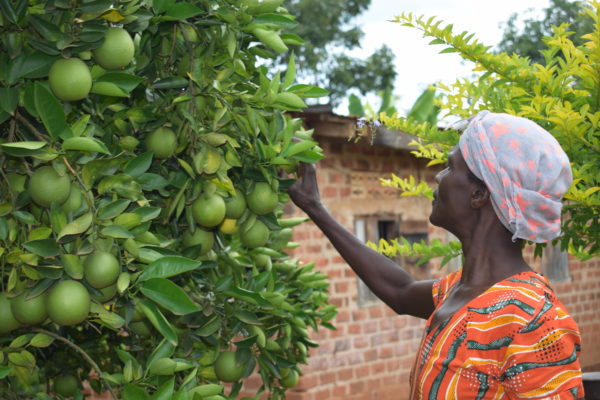Building Resilience Helps Ugandan Families Overcome Violence
When Godfrey Waiswa, 46, retired from being a driver for the government due to ill-health, he had no other source of income. Too weak to farm and with no savings, Godfrey’s family slipped into a state of dire poverty which triggered domestic violence due to stress that almost broke the family apart.
“My five children were not in school due to lack of money, my house was in a bad state, and the poverty was too much,” said Godfrey. “I was failing to support my family and felt very stressed. I started fighting with my wife since she would often demand money for the children’s fees and for things at home. We would even argue because she didn’t know my HIV status.” The ongoing violence also affected their children.

In 2016, Godfrey was approached by a parasocial worker from USAID’s Better Outcomes for Children and Youth project (BETTER OUTCOMES) implemented in Uganda by the Bantwana, which was enrolling households into a Village Savings Loan Association (VSLA) to improve their economic status. Upon learning about the state of affairs in the household, the parasocial worker convinced Godfrey to join the association. He also linked him and his wife for HIV testing.
“We were trained on how to save and plan for our money, and after the training, I was pleased to be elected chairman. That really lifted my spirits,” said Godfrey. “I realized that I had value in the community. I also accepted to go and test for HIV. As a leader, I needed to be exemplary. Unfortunately, I tested HIV was positive,” Godfrey recalled.
After getting the results, BETTER OUTCOMES referred both Godfrey and his wife Samalie, who was also positive, to enroll for antiretroviral therapy (ART) and receive counseling through the continued visits from the parasocial worker.

BETTER OUTCOMES together with the government of Uganda and local partners are strengthening Uganda’s child protection system and building the resilience of vulnerable children and families by expanding and scaling up proven, integrated social protection models of care that address children’s multiple vulnerabilities across the HIV continuum. These models support economic strengthening, HIV and GBV prevention, life skills and adolescent reproductive health, parenting, and early childhood development. To date, BETTER OUTCOMES has supported 155,616 children and their families across 20 districts.
As Godfrey and Samalie gained strength and got healthier from treatment, they became active members of the VSLA were able to access credit and start a poultry project and purchase pigs and cattle. They did not stop there but also started maize, banana and citrus farming. The improved livelihood and frequent counseling have transformed the family.
“Now that I can support my family, I feel better and more loving towards my wife. I also feel humbled and appreciate what we have gone through together with HIV testing, finding out we are HIV positive and starting on medication that we now have to take every day. All this made us closer,” said Godfrey. “ We were counseled on how to manage the stress and not fight. The counseling also helps us communicate better.” Godfrey says.

The increased income has improved life also for the children. “My children are at school – moreover in good schools! We have a better-balanced diet because we enjoy milk every day and eggs. I have more money that can facilitate each and everything in our lives,” Godfrey added.
The Better Outcomes for Children and Youth in Eastern and Northern Uganda project provides critical HIV and social protection services to families and children across 20 districts in eastern and northern Uganda. Learn more here.
